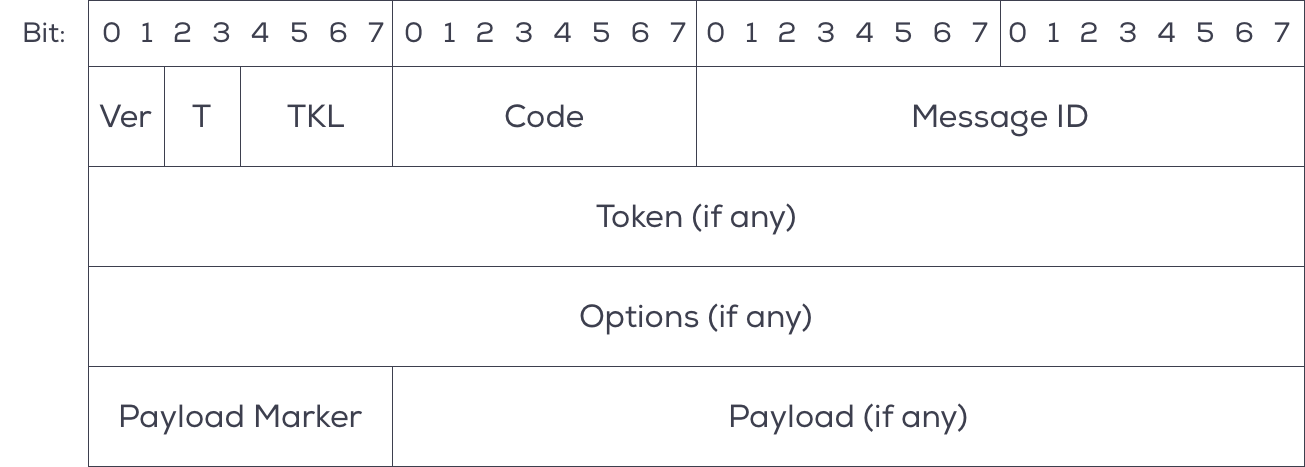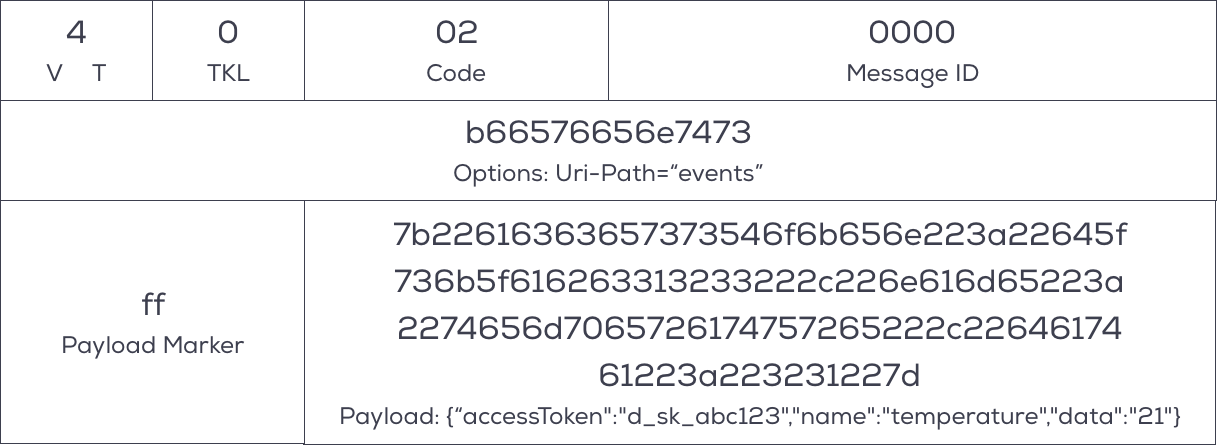The following diagram shows the structure of a CoAP packet

Version (2 bits) - CoAP version. Always 01
T (2 bits) - Transaction type
TKL (4 bits) - Token length
Code (8 bits) - Request or response code
Request codes
| Binary | Code | Type |
|---|---|---|
| GET | 1 | 00000001 |
| POST | 2 | 00000010 |
| PUT | 3 | 00000011 |
| DELETE | 4 | 00000100 |
Response codes
| Type | Code | Binary |
|---|---|---|
| Created | 2.01 | |
| Deleted | 2.02 | |
| Changed | 2.04 | |
| Content | 2.05 | |
| Bad Request | 4.00 | |
| Unauthorized | 4.01 | |
| Not found (resource) | 4.04 | |
| Method not allowed | 4.05 |
Message ID (16 bits) - Unique identifier for the packet. Used for duplicate detection.
Token (up to 64 bits) - Used to match a response with a request
Options (x bits) - Both requests and responses may include a list of one or more options.
Payload Marker (8 bits) - Marks the beginning of the payload. Always 11111111
Example for publishing an event
For this, we are going to show the packet structure of a device publishing an Event to Wia. The packet itself, along with the payload, should be transmitted in hex format.


This shows a POST request (Code: 02) being submitted to the path "events" with the payload structure {"accessToken":"d_sk_abc123","name":"hello-wia","data":"12345"}.
To test with your own device, make a request replacing d_sk_abc123 with your device's access token.